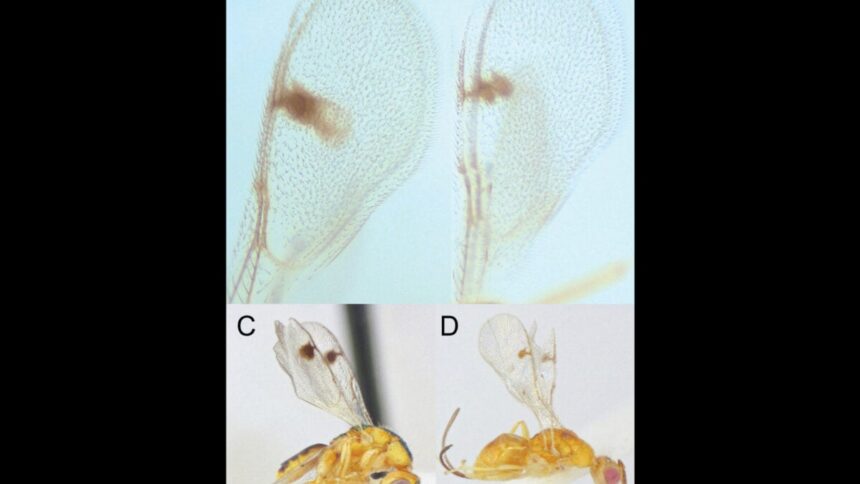There are all sorts of cruel parasites out there, and more are being uncovered all the time. Scientists have recently found several invasive species of parasitic wasps that have now landed in the U.S.
Researchers at Binghamton University and the University of Iowa made the discovery. For the first time ever, they detected the presence of two closely related parasitic wasp species previously only found in Europe. Don’t be too personally afraid, though: these wasps only infest other wasps.
A wasp-eat-wasp world
The researchers were interested in studying oak gall wasps. These wasps invade and lay their eggs inside oak trees. The egg-laying process also generates the titular gall—benign growths that sprout from the plant (in human terms, these growths are like warts). The egg matures inside the gall, using it for nourishment and protection.
Sometimes, though, nature’s parasites can have their own parasites, oak gall wasps included. These turducken parasites are known as hyperparasites, and many are parasitic wasps. These wasps also tend to be parasitoids, or parasites who ultimately kill their host. Oak gall parasitic wasps, in particular, will pierce through the gall and lay their own eggs, which will subsequently devour the existing larvae inside.
The research team wanted to better understand the diversity of oak gall wasps and their parasites. So they collected gall samples from oak trees on both coasts of the U.S., from British Columbia, Canada, to Florida. They also raised the parasitoid wasps found inside these galls in their labs.
All told, they identified more than 100 distinct species of parasitic wasps from the galls. But two of these species had never been spotted inside the U.S. until now; what’s more, they were found on opposite ends of North America.
The new wasps technically belong to the same species, Bootanomyia dorsalis. But previous genetic data from Europe has suggested there are at least two distinct subsets of these wasps out there, the researchers say—distinct enough that they should be viewed as different species. One of these groups, B. dorsalis sp. 1, was only found in New York, while the other, B. dorsalis sp. 2, was found in several locations along the West Coast.
The team’s findings were published earlier this July in the Journal of Hymenoptera Research (Hymenoptera being the large order of insects that includes wasps).
Mysteries to be solved
In science, one discovery often begets many more questions, and that’s the case here, too.
For starters, it’s unknown exactly how the wasps got here. It’s possible that they arrived on non-native oak tree species, some of which were first brought to North America as early as the 17th century. But since the adult wasps can live for nearly a month, they may have just hitched a ride on a plane, the researchers speculate.
The West Coast wasps were also very genetically similar, likely meaning that only a small population arrived in the area initially. Conversely, the East Coast wasps were more diverse, so it’s possible more than one introduction occurred.
Another important question is whether these wasps could pose a serious threat to the population health of the native oak gall wasps they’re infesting or to the overall ecosystems they now call home.
“We did find that they can parasitize multiple oak gall wasp species and that they can spread, given that we know that the population in the west likely spread across regions and host species from a localized small introduction,” said study author Kirsten Prior, a biologist in charge of Binghamton’s Natural Global Environmental Change Center, in a statement released by the university. “They could be affecting populations of native oak gall wasp species or other native parasites of oak gall wasps.”
What is clear is that scientists like Prior and her team have only started to scratch the surface of the parasitic world. Few research groups are able to reliably track the distribution and movement of these types of parasitic wasps, the authors point out, so it’s likely there are plenty more new and invasive species waiting to be discovered. Oh joy.
Read the full article here










